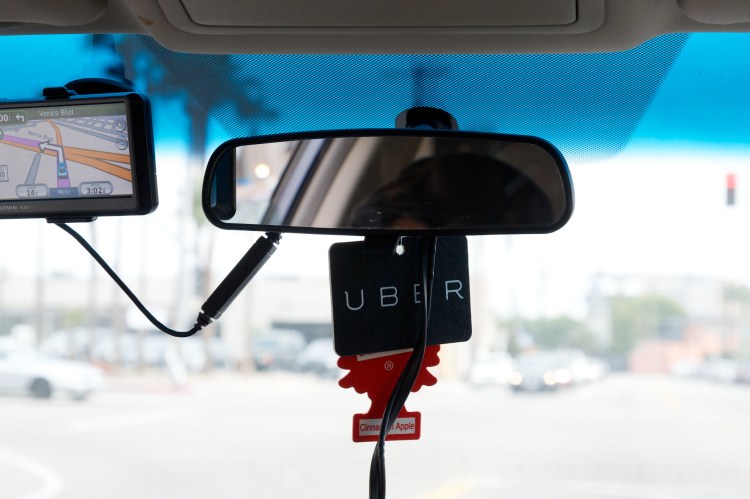Jeremiah Owyang, Founder of Crowd Companies, will be moderating one of Mobile Summit’s fireside sessions. Taking place February 23 and 24, Mobile Summit is limited to 180 senior-level execs who tackle the most urgent mobile issues facing them in 2015. It’s not too late to apply for one of the remaining seats.
If you’ve used Uber, Lyft, Airbnb, oDesk, Kickstarter, or Lending Club, you’ve participated in the Collaborative Economy.
The Collaborative Economy is an economic model in which people use commonly available technologies to get what they need from each other. There’s a number of ubiquitous technologies found in our own pockets that enable this movement, and a few that are not as obvious, hidden in the background. To clarify the technology stack, this post will help to identify, define, and give examples of how these pervasive technologies impact our life.
Smart phones give us access on demand.
Mobile technology is the key platform for local and global enablement. We’re familiar with the smart phone in our pocket or purse, but the location-based GPS technology, ability to host a variety of apps, connect to our credit cards and to display a plethora of information in high-definition graphics make mobile technology the driving force for this movement. EBay and Craigslist are over a decade old. Yet, when they started, they were unable to provide real-time sharing, because people did not have smart mobile devices in their pockets like they do now.
“Big data” analytics powers marketplace platforms.
I had the good fortune to visit a leading ride-sharing startup. It didn’t take me long to realize that, at their heart, they’re a “big data” analytics company for city-based logistics. Airbnb has told me that they are more like data scientists than a hotel brand. They foster trust that enables people to share within a global marketplace of millions of listings, based on advanced technology-based applications that match hosts and buyers, on demand. There are millions of transactions happening on Crowdfunding platforms. P2P lending platforms, like Prosper and Lending Club, require massive amounts of data crunching to analyze, anticipate, and forecast transactions.
Internet of Things makes idle resources available.
The Collaborative Economy enables people to access idle resources that others own, but aren’t using, like cars, offices, rooms, parking spots and more. For example, each Uber and Lyft driver is issued a smart phone that identifies when drivers are available for riders to summon from their own mobile devices. Breather, a high-end workspace available on demand, enables people to quickly find an office nearby that they can rent, based on availability. Yerdle, a marketplace that powers swaps and trades, encourages users to take photos of things they no longer need to help them to exchange them for things they do need.
Ratings and reviews foster trust in large marketplaces.
Ratings and reviews give providers (those who’re selling goods, services, or offering items for swap) with instant credibility to partakers (those who’re buying the resources) with an instant level of trust and credibility. Lyft drivers rate passengers, and vice versa, to ensure quality service from and for drivers and passengers. Drivers with low scores may be removed from the system. Riders with poor ratings may become ineligible to use the service.
Social networks offer instant trust — and power crowdfunding.
Collaborative Economy startups integrate social media features to promote a network of trustworthiness. For example, Airbnb offers Facebook integration, which helps users to find reviews of places to stay from friends they actually know. Social media is being used to promote services like Crowdfunding to advertise the need for investors to back the next digital watch, indie film, or to save a local school program.
Cloud technology enables rapid development.
Cloud services enable development teams to quickly scale (up and down) applications, data, and storage, based on changing market demand. This makes the time-to-market for startups cheaper, faster, and more efficient than ever before. The cost for startups to get into the market has plummeted, enabling thousands of startups, that would previously have been unable, to enter the market at low cost.
To sum it up, the Collaborative Economy might be able to exist on some, much smaller scale without technology. But it is the increasingly more rapid advances in technology, like microelectronics, wireless connectivity, and cloud computing that are enabling, advancing, and expanding the power of the Collaborative Economy to engage others, using the Internet of Things, in your neighborhood and around the globe.
As technology continues to advance, the day is coming when everything and everyone that can be connected to the internet will be connected to the internet — and we are farther down that road than most people think.
More details on the sessions at Mobile Summit and be found on the event’s agenda page. Space is extremely limited — we’ve only got seats for a total of 180 executives — but it’s not too late to apply for one of the remaining seats.

